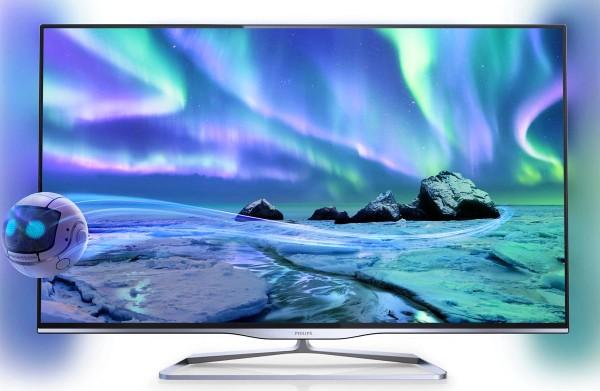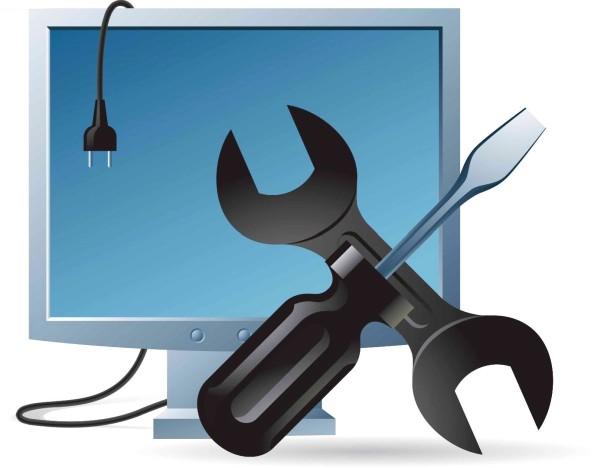Philips TV won't turn on: 6 common problems
Televisions, like any technology, have their drawbacks and eventually break down. Why, it is impossible to give an exact answer why the Philips TV does not turn on or does it on its own without preliminary diagnosis. As a rule, plasma works flawlessly for a long time, easily broadcasting digital, cable and regular channels. LCD malfunctions make themselves felt suddenly, but often they turn out to be easy to fix with your own hands.
The first thing you should pay attention to is the power cable. It is possible that it was not plugged into the outlet enough. Make sure it is in the optimal position and not pinched by heavy objects.
Then inspect the outlet itself or the extension cord where the cable was connected. Pay attention to the tightness of the contacts. Being strongly unclenched, weak contact occurs, which is why the device lacks power for full operation. This can also cause the socket to heat up and the contacts to burn, with a high probability of a short circuit.

Sometimes the LCD TV does not turn on the first time. Many people mistakenly begin to look for a problem in the plasma hardware, when in fact, the reason may lie in the control panel. The culprit is dead batteries or a damaged infrared port.
To testify that the remote control is broken, point the emitter at the smartphone’s camera; if the light does not blink, it means the batteries are low or there are other faults.
It is quite possible to start the TV from the control button on the body.
Inspect the receiver itself; it is often found to be in poor condition as a result of a fall or mechanical damage, for example, a ball hitting the screen.
If the equipment does not turn on at all, and the LED (light bulb on the body) is still blinking, you should study the error codes of Philips TVs. They are included in the user manual included in the kit, which helps you determine the problem yourself. For example, 3 consecutive flickers indicate a critical state of the power supply, etc.
Other breakdowns include:
- Problems with the firmware.
- Voltage surges.
- Power supply malfunction.
- Damaged inverter.
- Human factor.
The firmware has crashed

It is worth noting that software fails more often than one might think. The problem lies in unstable power supply or sudden outages from the power supply. As a result, the memory module burns out, which leads to erasing the operating system.
After the firmware flashes, a black screen is observed, Philips equipment will not start from the remote control, stops connecting to Wi-Fi, or begins to freeze on the introductory screensaver. In rare cases, the image “shifts” to one side.
By the way, it is not necessary to go to the experts, because it is possible to carry out repairs yourself. The only thing is that you need to have some experience in working with software and be sure that all the “brakes” appeared due to the software.
If, after updating the software, the Philips TV receiver does not search for channels, turns on and turns off immediately, then this indicates “symptoms” of a hardware failure. Well, if the TV does not respond to commands in any way, all that remains is to take it to the service center.
Attention! Before flashing the firmware, find the exact model name of your TV receiver. An error of just a few letters can lead to a complete violation of the launch algorithms. You only need to download software from the official website of the device manufacturer.
Power surges
Due to power surges, individual power supplies on the main board stop working. Often they are the ones that cause the loss of image and lack of sound, even if there is video on the screen. The catch is that an electrical circuit without stabilizers quickly becomes unusable.

Initially, this is characterized by minor malfunctions in the operating system. At first, they can be easily eliminated by using a full reboot, disconnecting the equipment from the power source. A little later, if the drops and jumps do not stop, the electronics will stop interacting with the control panel, stop seeing the flash drive, or even cause a “software crash.” Only a technician at a service center can cope with restoring the functionality of the television receiver.
Note! Take care of the safety of your devices by purchasing surge protectors or stabilizers. Such insignificant costs will help protect expensive Philips equipment from frequent breakdowns.
power unit
The Philips TV's power supply is the weakest component of the system. It fails due to the capacitors losing their tightness (so-called “swelling”). The first signs of a possible breakdown are a whistle or squeak when the device is turned on. Not everyone is alarmed by this, which ultimately leads to a serious malfunction of the device, including its complete replacement.

A power supply malfunction is characterized by loss of images, active flickering of the backlight and reasonable TV shutdown. Symptoms may also vary depending on the model. So, the same whistle makes itself felt if:
- The capacitors are shorted.
- The microcircuits are broken.
- Transistors burned out.
Of course, something like this is very rare in modern devices. It is not recommended to look for the source of noise on your own, because having disassembled the case into its main parts, without proper practice it is easy to hook other, no less important parts of the overall system. The best solution in this situation would be to visit a workshop with a full diagnosis of the device.
Often, fluctuations in power supply lead to damage to the central processor. And since it comes only with a board, repairs will cost several times more than buying a power supply unit alone.
Inverter power
Following the power supply, the inverter most often needs to be replaced. According to its structure, it performs a number of useful functions, without which it is impossible to imagine the stable functioning of the television receiver.
- Firstly, it converts DC voltage into AC voltage.
- Secondly, the responsibility for changing brightness lies on its “shoulders”.
- Thirdly, the inverter is responsible for protection against network overload and short circuits.

A clear sign of inverter failure is:
- Changes in screen brightness, sometimes it turns off completely or goes completely dark.
- Backlight glare when the network indicator remains on, but does not respond to the control panel.
- The TV receiver does not start after a long period of inactivity.
- The backlight behaves strangely, stays on after turning off or refuses to start at all.
- There is sound, but no picture.
Only diagnostics will help you finally understand that it is the inverter that has failed. It is under no circumstances recommended to carry it out yourself, because without special knowledge and practice, there is a possibility of damaging important radio components.
Additionally, make sure that the antenna connected to the TV input is grounded. Otherwise, there is a risk of losing equipment due to a severe thunderstorm.
Human factor
The most underrated option of all the ones offered. Speaking from the beginning, it is impossible to ignore the fact that almost all people do not use the operating instructions for equipment, including television sets. This leads to a number of misunderstandings about how exactly the equipment should be used, where to connect the wires, or how to start the on timer so that the device does not suddenly start up in the middle of the night.

Simple inexperience and lack of knowledge leads to contacting the service center with complaints about lack of signal from the antenna or problems with HDMI detection. Things are much worse when an incompetent buyer decides to replace burnt parts himself. Experts have long been paying attention to the mandatory presence of technical education or experience to interact with TV electrical circuits. Therefore, do not bet on the health of your plasma, but rather seek help from qualified professionals.
Conclusion
From all of the above, it is not difficult to guess that before declaring a complete malfunction of the newly acquired equipment, you need to seek help from the Philips TV instructions. Perhaps she will explain why the equipment does not turn on.
If Philips equipment has shown excellent performance over the past years, then the cause of unstable operation should be sought in the hardware component. It is possible that the matrix or power supply will need to be replaced. If you have never updated the software, then you should think about “upgrading” the software, because it often turns out to be the culprit of all troubles.
Video






